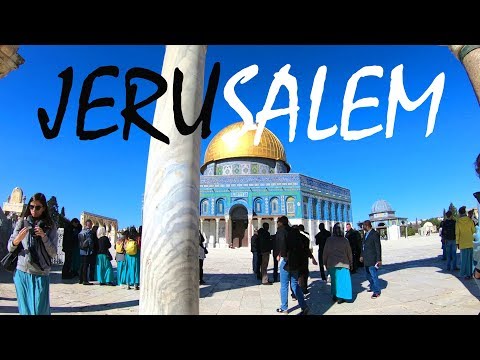
Jerusalem, a city steeped in history and spirituality, stands as one of the most profoundly influential cities in human history. At its heart is the Old City, a walled area less than one square kilometer that hosts some of the most sacred sites for Judaism, Christianity, and Islam. The Old City of Jerusalem is not only a focal point for religious devotion but also a magnet for travelers seeking to explore an incredible tapestry of cultures, histories, and architectural marvels. Here’s your guide to experiencing this extraordinary place.
#### Historical Overview
The history of Jerusalem is layered through centuries of religious traditions and political changes, each adding its own mark to the cityscape. Established by King David as the capital of ancient Israel nearly 3000 years ago, it has been besieged, conquered, and rebuilt multiple times. Today’s structure primarily dates back to the Ottoman period but retains elements from Byzantine and Roman times.
#### Entering Through the Gates
The Old City is surrounded by impressive 16th-century Ottoman walls with eight gates. Each gate has its own story and character—Jaffa Gate serves as a bustling main entryway leading directly into Armenian and Jewish quarters; Damascus Gate opens to the vivid scenes of the Muslim Quarter; while Lions’ Gate has significant religious connotations linked to Christian traditions.
#### Exploring the Quarters
The Old City is divided into four distinct quarters: Muslim, Christian, Armenian and Jewish. Each quarter offers unique experiences:
– **Muslim Quarter:** The largest quarter invites visitors with its vibrant souks (markets), where spices’ aromas fill the air alongside colorful displays of textiles and crafts. It’s also home to several important Islamic landmarks including the Dome of the Rock on Temple Mount — a stunning example of Islamic architecture.
– **Christian Quarter:** This quarter houses over 40 churches along with hostels and pilgrim residences. Its centerpiece is the Church of the Holy Sepulchre — where many Christians believe Jesus was crucified, buried, and resurrected. This site is an amalgamation of various architectural styles from different epochs.
– **Jewish Quarter:** Reconstructed extensively after 1967, this area contains significant Biblical sites like the Western Wall (Wailing Wall), revered as Judaism’s most sacred site where prayers continue day and night amid deep religious devotion.
– **Armenian Quarter:** The smallest quarter reflects centuries-old Armenian heritage with beautiful old churches hidden behind narrow lanes. It maintains a tranquil atmosphere compared to other quarters.
#### Cultural Immersion
While touring through these quarters provides insight into their respective cultures and histories, experiencing local food further enriches your journey. Sample traditional dishes such as falafel or shawarma in one corner; step another few feet to enjoy knafeh or baklava at a sweet shop in another quarter.
Visiting during various festivals can also add color to your trip—religious ceremonies during Easter or Ramadan provide unique glimpses into local customs and practices rooted deeply in Jerusalem’s social fabric.
#### Conducting Your Visit
Given its complex historical context intertwined with ongoing political sensitivities due to Israeli-Palestinian conflict dynamics affecting daily life here—it’s prudent for visitors to remain respectful towards all communities within this microcosm world.
##### Guided Tours
Opting for guided tours can be beneficial not only for navigation purposes but also for gaining deeper insights into each site’s significance which might otherwise be missed if exploring alone.
##### Practical Tips
– Wear modest clothing respectful towards holy sites across religions.
– Be prepared for walking through narrow cobblestone alleys which might be crowded especially during peak tourist seasons or religious holidays.
##### When To Go
Spring (April-May) or autumn (September-November) are ideal times due to milder weather allowing more comfortable exploration around this dense historical enclave.
### Conclusion
Every nook in Jerusalem’s Old City whispers stories from millennia past—a tour here promises both an enriching spiritual journey as well as an immersion into some of mankind’s oldest continuing civilizations that share an intense connection with this small yet incredibly potent patch on our planet Earth.
